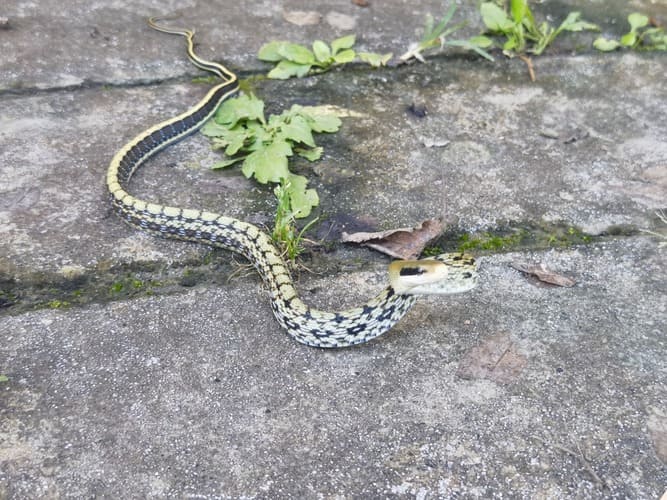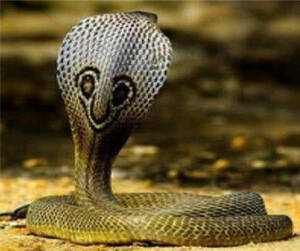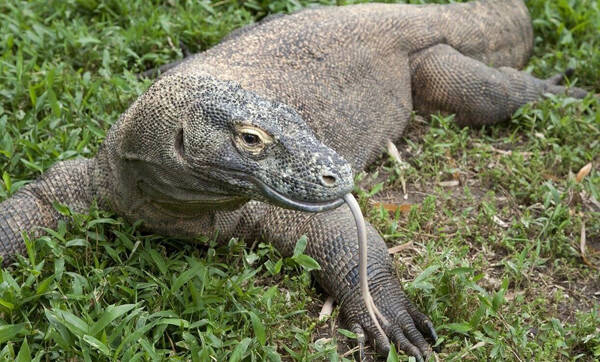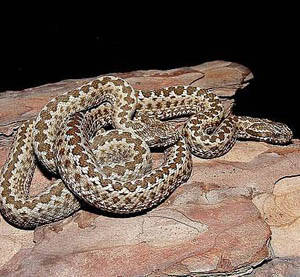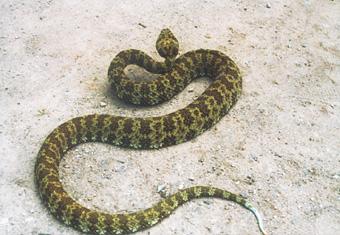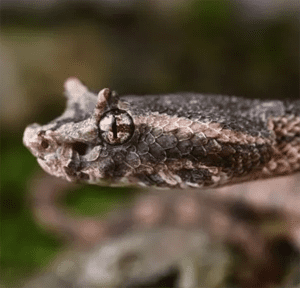Diploderma batangense
IUCN
LCBasic Information
Scientific classification
- name:Diploderma batangense
- Scientific Name:Diploderma batangense,Jpalura batangensis,Batang climbing lizard, fast-walking lizard
- Outline:Squamata
- Family:Iguanidae D.lizard
Vital signs
- length:15-20cm
- Weight:No verification information
- lifetime:5-8years
Feature
Ability to run quickly and change direction quickly,It lives on the rocks on the hillsides at an altitude of 2500 to 3400 meters. It is active during the day and feeds mainly on small spiders and insects.
Distribution and Habitat
Distributed in Batang, Sichuan, China
Appearance
The Batang dragon lizard (new species) is similar to the green climbing lizard, but is significantly different from the latter: it has a well-developed small cavity under the side folds of the neck, 7-9 continuous or discontinuous horizontal stripes on the back of the body, and the male body is There is a gray-white vertical stripe on each side of the back, and the large rib scales on the sides of the body are mostly white.
Details
The foreign name of the Batang dragon lizard is Jpalura batangensis. It mainly chooses to overwinter in places such as rock crevices and dead branches and leaves.
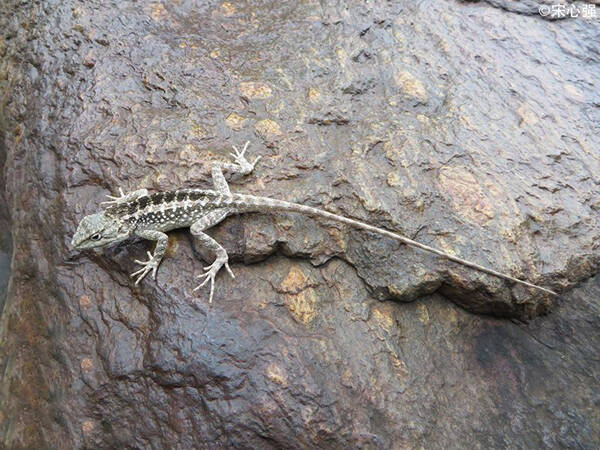
The Batang dragon lizard feeds on insects and some rodents, and occasionally poultry. Its teeth are sharp and have three cusps. Herbivores (such as iguanas) have broad, leaf-shaped tooth crowns with serrated incisal edges. Those who feed on molluscs and crustaceans (such as Caiman lizards [Dracaena]) have blunt, rounded teeth at the back of the palate for crushing. There are longitudinal grooves or folds on the inside of each tooth on the lower jaw to draw out venom. The teeth of Batang dragon lizards are born on the edges of the upper palatine bone, prepalatal bone and dental bone, and in a few species, they are born on the palate. There are "egg teeth" on the anterior palatine during the embryonic stage, which protrude forward from the snout and are used to drill through the egg shell. They degenerate after hatching. The way the teeth are inserted is mostly lateral, and some are apical. The two eyes can move independently. Batang dragon lizards have salt glands to excrete mineral salts. Shoulder straps present.
Batang dragon lizards are active during the day, while geckos are mostly active between dusk and dawn, and can make loud noises (most Batang dragon lizards cannot make sounds). The Batang dragon lizard's hunting method is to wait or search. Many Batang dragon lizards can cut their tails off themselves, and the severed tail can be quickly twisted to distract the predator's attention, allowing the Batang dragon lizard to escape. Many Batang dragon lizards exhibit territorial behavior (including territorial displays) or courtship displays. Many species have femoral pores, which may be used to secrete chemicals to attract mates. The Batang dragon lizard is of little economic significance to humans. Some iguanas are edible and some can be used for tanning. Geckos live in homes and can catch pests, but they may spread salmonella. The Batang dragon lizard is an important research material in biology and is often kept as an ornamental animal.
Batang dragon lizards have four legs and strong hind limb muscles. They can run quickly and change running direction quickly. Cnemidophorus can reach speeds of 24 kilometers (15 miles) per hour. There are several families of Batang dragon lizards with elongated bodies, shortened limbs, or even no limbs. Geckos, Iguanas (Uta) and Acanthodactylus have multiple edges on their toes to increase their surface area and prevent them from sinking into the sand. Geckos can crawl on vertical glass panels. Each foot has 5 toes, which are divided into two inner and outer groups by means of webs made of skin. The 3 toes on the outside of the hind limbs and the 2 toes on the inside form one group each. The opposite is true for the forelimbs, which are suitable for grasping branches. The male body of Batang dragon lizard has a pair of sex organs - hemipenis.
The hibernation time of Batang dragon lizard is from mid-November to early March of the following year. During hibernation, the whole body lies against the branches or cave walls. When the room temperature drops to about 16°C, the Batang dragon lizard begins to hibernate. When the room temperature drops to about 14°C, the Batang dragon lizard completely enters hibernation. From February to March of the following year, when the room temperature rises to about 14°C, the Batang dragon lizard begins to go out of sleep, and its activity is small in the early stage of sleep. When the temperature rises to 17°C, the Batang dragon lizard fully wakes up and its activities return to normal.
The growth and molting phenomenon of the Batang dragon lizard was observed. The Batang dragon lizard sheds its skin in pieces, and the molting time lasts for 8 days, of which the first 3 days are the main time of molting. The first 5 days to the first 2 days of molting do not change. It cannot eat, and its food intake increases in the first three days of the molting period, especially the first day of the molting period. It also has the behavior of taking off its skin with the help of external conditions. The food intake after molting remains the same as before molting.

